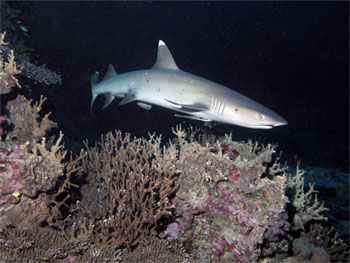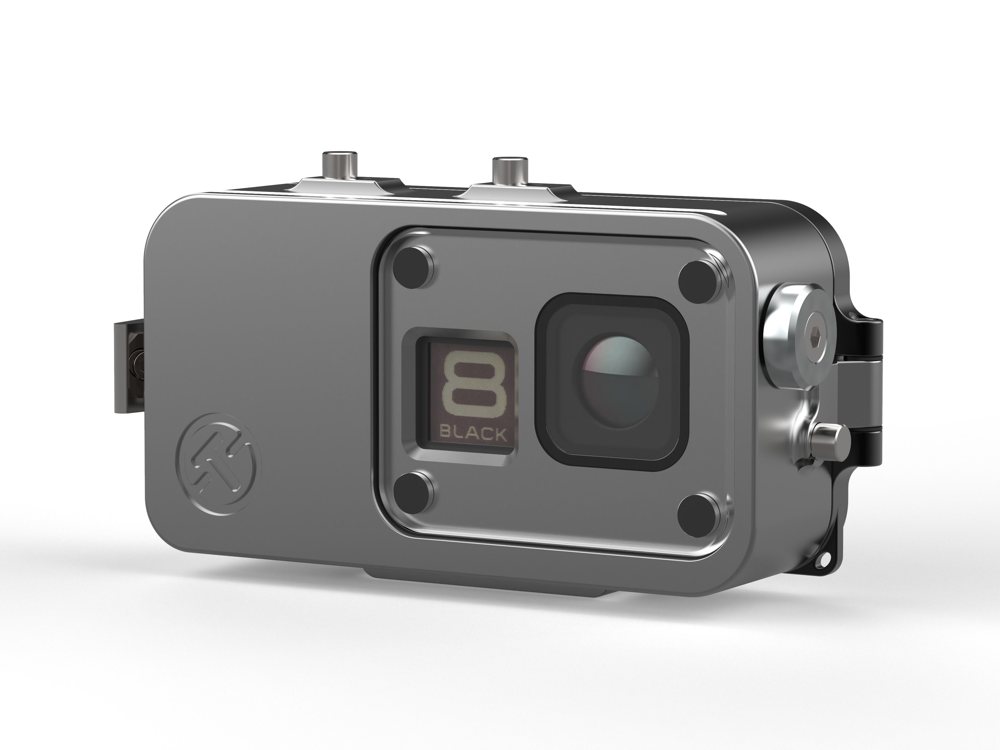- Home
- Directory
- Shop
- Underwater Cameras - Photographic Accessories
- Smartphone Housings
- Sea Scooters
- Hookah Dive Systems
- Underwater Metal Detectors
- Dive Gear
- Dive Accessories
- Diving DVD & Blu-Ray Discs
- Diving Books
- Underwater Drones
- Drones
- Subscriptions - Magazines
- Protective Cases
- Corrective Lenses
- Dive Wear
- Underwater Membership
- Assistive Technology - NDIS
- On Sale
- Underwater Gift Cards
- Underwater Art
- Power Stations
- Underwater Bargain Bin
- Brands
- 10bar
- AOI
- AquaTech
- AxisGo
- Backscatter Underwater Video and Photo
- BLU3
- Cayago
- Chasing
- Cinebags
- Digipower
- DJI
- Dyron
- Edge Smart Drive
- Eneloop
- Energizer
- Exotech Innovations
- Fantasea
- Fotocore
- Garmin
- Geneinno
- GoPro
- Hagul
- Hydro Sapiens
- Hydrotac
- Ikelite
- Indigo Industries
- Inon
- Insta360
- Intova
- Isotta Housings
- Jobe
- JOBY
- Kraken Sports
- LEFEET
- Mirage Dive
- Nautica Seascooters
- Nautilus Lifeline
- NautiSmart
- Nitecore
- Nokta Makro
- Oceanic
- Olympus
- OM System
- Orca Torch
- Paralenz
- PowerDive
- QYSEA
- Scubajet
- Scubalamp
- Sea & Sea
- SeaDoo Seascooter
- SeaLife
- Seavu
- Shark Shield
- Sherwood Scuba
- Spare Air
- StickTite
- Sublue
- Suunto
- SwellPro
- T-HOUSING
- Tusa
- U.N Photographics
- Venture Heat
- XTAR
- Yamaha Seascooter
- Youcan Robot
11 Sharks You Should Know About This Summer
Contributed by Wandy Hochgrebe
Sharks have long been feared by people. Monsters that appear from
the depths of the sea and take life after life, sentiments that have
been enhanced by movies such as 'Jaws'. Sharks are efficient
predators no doubt, their senses and hunting strategies refined over
the long time they have inhabited the seas. Rather than freightening
people even more we would like to educate people about these amazing
creatures and show that literally sharks come in all shapes and sizes.
As you start reading about sharks, visiting aquariums and maybe even snorkelling or diving with these amazing animals you might start to appreciate or even like them and the important role they have to play in the (marine) ecosystem. Therefore we listed 11 species that you could find in your own backyard so to speak with a little bit of info.
Great White Shark - Carcharodon carcharias

 Other common names for this
shark include White Shark, Great White, White Pointer and White Death.
An amazing powerful shark no doubt with refined senses to detect and
catch its prey. The main diet of the Great White Shark consists of fish
and smaller sharks. Only the larger individuals will have a go at seals
and dolphins.
Other common names for this
shark include White Shark, Great White, White Pointer and White Death.
An amazing powerful shark no doubt with refined senses to detect and
catch its prey. The main diet of the Great White Shark consists of fish
and smaller sharks. Only the larger individuals will have a go at seals
and dolphins.
The Great White Shark has a solid body, pointed nose and crescent-shaped tails. Its colour is slate grey with a bronze sheen on the top and white below. The eyes are black and round and the teeth are visible as the mouth is always slightly opened.
In Australia they are found from North-West Cape in Western Australia to the south of Queensland, but they are mainly seen off the coast of South Australia.
The maximum length of this shark is not really known, but the largest ever caught measured 6 meters. Trust me, this is an impressive shark at any size.
Considered dangerous to human.
*Image by underwater australasia member Daniel Norwood
Bull Shark - Carcharhinus leucas
 A resident Bull Shark can
regularly be seen at the Yongala Wreck, off Townsville and doesn’t seem
to pose a danger to the divers visiting this wreck. They are also
common at the shark feeding at Beqa Lagoon, Fiji with plenty of people
being very excited about the opportunity to be in the water with them.
A resident Bull Shark can
regularly be seen at the Yongala Wreck, off Townsville and doesn’t seem
to pose a danger to the divers visiting this wreck. They are also
common at the shark feeding at Beqa Lagoon, Fiji with plenty of people
being very excited about the opportunity to be in the water with them.
Bull Sharks are a more tropical shark and live all around northern Australia from Perth to Sydney. They prefer murky waters near the coast. Bull Sharks are also called River Shark or Freshwater Whaler due to their ability to live for extended time, and even breed, in fresh water and have been found kilometres upstream of large rivers.
Considered dangerous to human, especially since they are more likely to visit places where people swim.
*Image by underwater australasia member David Baxter
Tiger Shark - Galeocerdo cuvier
 Tiger Sharks have a diverse
diet and are more opportunistic feeders
than the other large sharks and bizarre items have shown up in its
stomach contents. These sharks will go for both live prey and carrion.
However, sometimes they go for a more specific prey and timely show up
at areas near rookeries where young seabird learn to fly, at turtle
nesting areas etc and wait for dinner to drop in.
Tiger Sharks have a diverse
diet and are more opportunistic feeders
than the other large sharks and bizarre items have shown up in its
stomach contents. These sharks will go for both live prey and carrion.
However, sometimes they go for a more specific prey and timely show up
at areas near rookeries where young seabird learn to fly, at turtle
nesting areas etc and wait for dinner to drop in.
Tiger Sharks are a large species with a blunt, almost square, head and large black eyes set forward on the snout. Its back is grey with darker tiger-like grey stripes (hence the name), which sometimes fade completely when the animal gets older.
The Tiger Shark is common in the tropics and also occurs in temperate waters off the New South Wales and West Australia coast during summer. They hunt in harbours and around shallow reefs and are therefore more likely to encounter humans more often than the other species of dangerous sharks.
Tiger Sharks can reach a maximum length of 6 meters, but are usually between 3 - 5 meters.
Considered dangerous to humans.
*Image by underwater australasia member Iwona Krekora
Scalloped hammerhead - Sphyrna lewini
 The Scalloped Hammerhead Shark
usually eats fish and squid, which they hunt for at night in the deeper
waters.
The Scalloped Hammerhead Shark
usually eats fish and squid, which they hunt for at night in the deeper
waters.
Their oddly-shaped head is thought to be more efficient at detecting electrical variations and helps the shark at swiftly turning when chasing their speedy prey.
This rather shy shark can sometimes be found in large schools.
Hammerhead Sharks are easily identified due to the distinct shape of their head. The Scalloped Hammerhead has several indents at the front of its snout. This shark has a grey-brown back and a lighter underside.
Scalloped Hammerhead sharks live all around northern Australia from Perth to Sydney. This shark species can reach a maximum length of 3.5 meters.
*Image by underwater australasia member Michael Roet
Grey Nurse Shark – Carcharias taurus
 The Grey Nurse Shark have
longish fork-like teeth that can easily
been seen even when their mouth is closed, making them look much more
scary than they really are. These teeth are being used to catch their
prey such as fish and small sharks and rays.
The Grey Nurse Shark have
longish fork-like teeth that can easily
been seen even when their mouth is closed, making them look much more
scary than they really are. These teeth are being used to catch their
prey such as fish and small sharks and rays.
Known also as the Sandtiger Shark this species was long thought to be a ferocious man-eater. Many of these sharks were killed during the 1950 – 60s until it was realised that Grey Nurse Sharks very rarely attack humans and only when they are cornered or when people carry dead fish around their waist.
Grey Nurse Sharks have a bronze coloured back, a pale belly and a pointy snout with their teeth protruding. Some have darker spots on their sides, which always remind me of freckles, although I doubt they do a lot of sunbaking.
In Australia they can be found from Southern Queensland down to south New South Wales on the east coast and in the South West of Western Australia. They migrate to the relative warmer waters in winter.
The Grey Nurse Shark is considered critically endangered on the east coast of Australia and is a protected species.
Grey Nurse Sharks can grow to 3.2 meters.
Spotted Wobbegong – Orectolobus maculatus
 Wobbegong Sharks are pretty
common in Australia and there are 4
different species that can be found here: Ornate Wobbegong, Spotted
Wobbegong, Tasselled Wobbegong and the Dwarf Ornate Wobbegong.
Wobbegong Sharks are pretty
common in Australia and there are 4
different species that can be found here: Ornate Wobbegong, Spotted
Wobbegong, Tasselled Wobbegong and the Dwarf Ornate Wobbegong.
The word 'Wobbegong' believed to come from an Australian Aboriginal language, meaning 'shaggy beard' referring to the branched lobes around the mouth, according to Wikipedia.
Their mottled, camouflaged appearance, flattened head, frilly appendages at their mouth and the fact they lie motionless underneath rocks earned them the alternative name of carpet shark. Although the individual species are easily confused you would not mistake them for any other shark due to their unique appearance.
The Spotted Wobbegong mainly feeds at night and feeds on fishes, crayfish, crabs and octopuses.
This Wobbegong is the largest species of the Australian Wobbegongs and with its maximum length of about 3 meters it is an impressive sight to see a large one swim past or even towards you! Spotted Wobbegongs are mottled brown and yellow with distinct circles of small white spots.
The Spotted Wobbegong occurs along the southern coastline of Australia from southern Queensland to south-western Western Australia and is probably unique to Australia (endemic).
All wobbegong sharks can look ridiculously docile, but do not try to pick them up oklpi09or pull their tail! This shark is able to turn 180 degrees in a flash even if you manage to hold on to their tail. Their bite can be serious as they have plenty of sharp teeth to hold on with.
Whale Shark - Rhincodon typus
 The largest fish in the ocean
hunts by opening its large mouth and swallowing everything that gets
stuck inside. Plenty of plankton gets caught in sieve-like gill rakers,
but schools of fish can also get stuck in its mouth and even the odd
small tuna or squid make their way inside.
The largest fish in the ocean
hunts by opening its large mouth and swallowing everything that gets
stuck inside. Plenty of plankton gets caught in sieve-like gill rakers,
but schools of fish can also get stuck in its mouth and even the odd
small tuna or squid make their way inside.
Whale Sharks are very easily recognised due to the sheer size. Its back
and sides are covered by a checker-board pattern of dots and lines. The
head is blunt.
The pattern on a Whale Shark is unique to the animal and researchers
are using those patterns for identification and tracking of individual
Whale Sharks.
Whale Sharks are found in tropical seas all around the world and may be
seen all around northern Australia from Perth to Bass Strait. Generally
people encounter them when they are swimming and/or feeding near the
water’s surface.
Every year from March until the beginning of July Whale Sharks migrate
past Exmouth in Western Australia and people have the opportunity to
snorkel along side. Strict rules apply as to not harass the animals,
but also to avoid people getting hurt by this gentle giant.
Most Whale Sharks are 4 – 12 meters long, but the largest Whaleshark
that has been caught was documented
as being 12.6 meters long and have a girth of 7 meters!
*Image by underwater australasia member Daniel Norwood
Leopard Shark – Stegostoma fasciatum
 The Leopard Shark is another
shark species you do no have to be afraid of. They can often be found
resting on a sandy patch and can easily be approached.
The Leopard Shark is another
shark species you do no have to be afraid of. They can often be found
resting on a sandy patch and can easily be approached.
These sharks feed mainly on shellfish as well as shrimp and small
fishes.
The adult animals feature leopard-like spots on top of their body and
the top of its tailfin has the same length as its body. The juvenile
ones feature a striped pattern hence the alternate name of Zebra Shark.
The Leopard Shark has a blunt head and very small eyes.
This shark prefers warmer waters of 22°C and up and normally can be
seen in the warmer waters on shallow reefs from Carnarvon, Western
Australia to Sydney.
The Leopard Sharks can reach a maximum size of 2.5 meters.
Grey Reef Shark – Carcharhinus amblyrhynchos
The Grey Reef Shark or Grey Whaler Shark has sharply pointed but
small teeth. They mainly eat small reef fishes and occasionally squids
or crayfish.
When threatened, Grey Reef Sharks will perform a threat display with a
hunched back dropped pectoral fins and an exaggerated side-to-side
swimming motion- a sure sign to leave it alone. They do give quick
warning bites, but are not usually thought to be a threat to humans.
This shark can be recognised by its shark-like appearance and a black
edge on the V-shaped tailfin, hence the other common name of Black-vee
Whaler. The back is bronze or grey and it has a pale belly.
Grey Reef Sharks are commonly seen on the Great Barrier Reef by divers
and snorkelers and can be found on coral reefs, near deeper water in
northern Australia from Carnarvon to Bundaberg.
Grey Reefies can theoretically reach a length of 2.5 meters, but most
of them are just under 2 meters.
Whitetip Reef Shark – Triaenodon obesus
 This common reef shark hunts
mainly at night in groups and go for small reef fishes, octopus,
cuttlefish, but also crab and lobsters.
This common reef shark hunts
mainly at night in groups and go for small reef fishes, octopus,
cuttlefish, but also crab and lobsters.
Most people are comfortable with seeing a Whitetip Reef Shark on their
dive or snorkel trip on a coral reef. These sharks are very slender,
torpedo-like and have, as their name implies, white-tipped dorsal fins
and tailfin.
Quite often they can be seen lying underneath coral heads or in small
caves or swimming near the ocean floor.
Whitetip Reef Sharks are very common on reefs all around northern
Australia from West Cape to Gladstone. This fairly small shark can
reach a maximum length of 1.7 meters.
Port Jackson Shark – Heterodontus portusjacksoni
 Port Jackson Sharks feed at
night on a variety of bottom dwelling animals and likes sea urchins and
sea stars.
Port Jackson Sharks feed at
night on a variety of bottom dwelling animals and likes sea urchins and
sea stars.
Although this shark would not attack humans care should be taken if you would ever see the need to be handling this shark as a poisonous spine sits just in front of its dorsal fins.
This somewhat odd looking shark is pale-brown with a dark brown harness-shaped pattern on its back. Its head is blunt with bony ridges above the eyes.
Although its name implies it is only found in Sydney’s Harbour the Port Jackson Shark can be found all around southern Australia between Carnarvon, Western Australia and Tweed Heads, New South Wales
Port Jackson Sharks are only small and reach a maximum size of 1.6 meters, but are generally much smaller – around the 1.3 meters.
References
- Australian Sharks & Rays by Steve Parish
- Sharks & Rays of Australia by Kelvin Aitken
- Field Guide to Australian Sharks & Rays by R.K. Daley, J.D. Stevens, P.R. Last and G.K. Yearsley
- Wikipedia
Shopfront
-
 Scubalamp V7K Photo/Video Light - 15,000 lumens
Scubalamp V7K Photo/Video Light - 15,000 lumens
- Price A$ 1,699.00
-
 SeaLife - SportDiver Pro 2500 Set
SeaLife - SportDiver Pro 2500 Set
- Price A$ 1,299.00
-
 Backscatter Dual Hybrid Flash Underwater Strobe Bundle with FREE Diffusers - Battery DEAL
Backscatter Dual Hybrid Flash Underwater Strobe Bundle with FREE Diffusers - Battery DEAL
- Price A$ 2,995.00
-
 SeaLife Sea Dragon Duo 6000 Color Boost Set
SeaLife Sea Dragon Duo 6000 Color Boost Set
- Price A$ 1,749.00
-
 SeaLife Sea Dragon 5000+ with Color Boost™ Photo-Video light
SeaLife Sea Dragon 5000+ with Color Boost™ Photo-Video light
- Price A$ 1,049.00
-
 T-Housing Aluminium Deepdive Housing H8ENERGY for GoPro Hero 8
T-Housing Aluminium Deepdive Housing H8ENERGY for GoPro Hero 8
- Price A$ 579.00
-
 OM System TG-7 Waterproof Tough Camera - Olympus
OM System TG-7 Waterproof Tough Camera - Olympus
- Price A$ 699.00
-
 Garmin Descent™ G1 - Solar
Garmin Descent™ G1 - Solar
- Price A$ 929.00
In the Directory

 AOI Australia
AOI Australia
AOI underwater photographic products - a professional OEM/ODM underwater camera casings and underwater electronic products manufacturer. Great quality wet lenses for underwater photography.
 Fantasea Australia
Fantasea Australia
Fantasea Line is an international company that has been involved in diving, water sports and photographic industries for nearly 40 years.



















